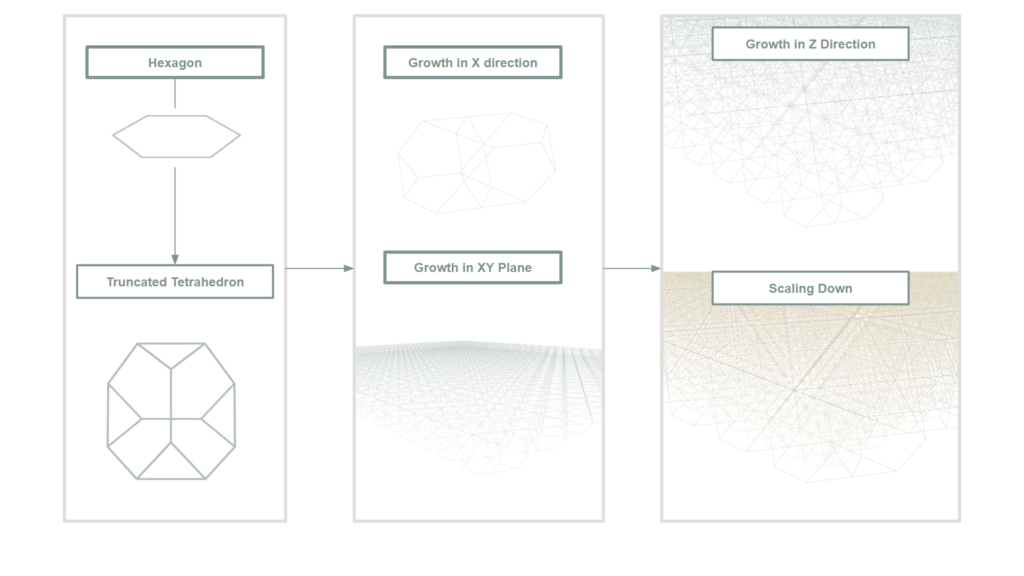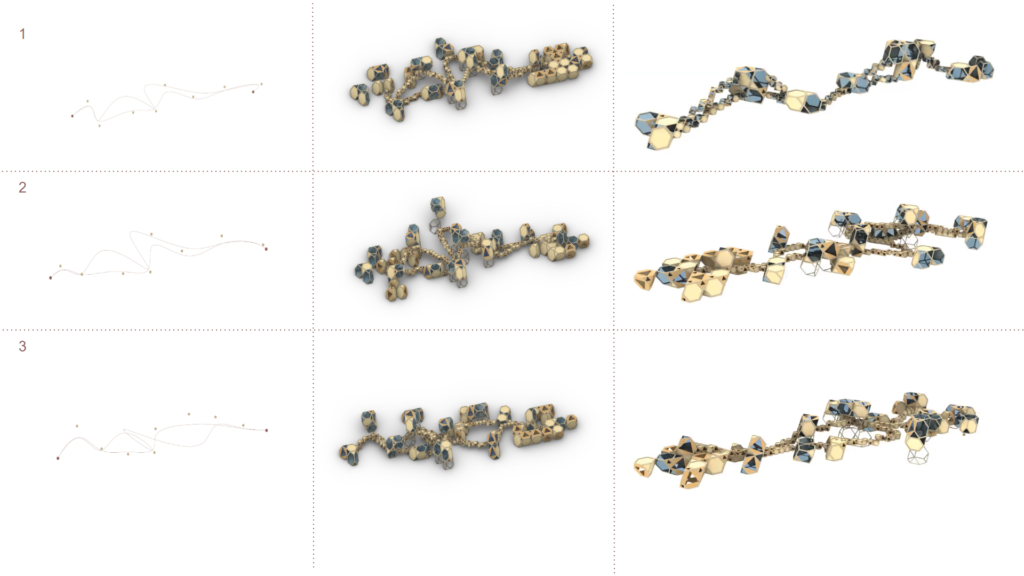The design concept is born from the path of exploration, which starts at the terrain, fluctuates on the site and lake, and ends at the terrain again. Along the path, the program nodes act as attractor points to the path, and allow the user the explore the nature. The program starts with the entrance, auditorium, library and the visiting center, continues with the exhibition spaces, outdoor routes, and finally ends with exterior circulation.

For our design, we are moving in a space of Truncated Tetrahedron Units, where they are forming a 3 dimensional grid. The grid also shrinks to form a hierarchy of spaces, which refers to their purpose.

First we form the main path based on the program. Secondly, the units that are relating to the path and program are extracted. In this part, the units that are closest to the inputs of program points are identified. For the ones that are above ground, additional units of timber frames are added. In the next stage, the circulation path is defined by the smaller truncated tetrahedron units, connecting the program units. At the last stage, supplementary units are added as an addition to the program units on the landscape.

After creating the initial components we unify them to create interior continuous spaces. And extract the edges to create our timber structure. After creating the initial form, we further develop the design, with adding an extra layer of complexity on the building skin. We use are structure’s tetrahedrons to explore different patterns. We generate different variation with glass, timber or both.

Here we can see the materialization and panelling exploration. The timber frame structure for all units are preserved, and we use 3 different panel variation for program uses: open, semi-open or close. And 2 more solid variations for circulation.
Form Finding Process
The program starts on a curvilinear path and the final form articulates the hierarchy of the spaces with the size of the units. The variety of panelization provides a dynamic experience for the users as they explore the museum.

Form Iterations
As our script defines, the form is based on the building’s uses as well as attraction points. This concept could be applied to multiple design scenarios. Also not only they main form can be modified but we explore multiple design explorations by adjusting the paneling variations as well.

In our final model, the project grows into the landscape, both into the terrain and the lake, like a plant budding.
Thanks to the transparency of the project, users will have the opportunity to see through different perspectives.
Horizontally, the project grows in many directions into the nature, increasing the interaction and offering a dynamic experience.

